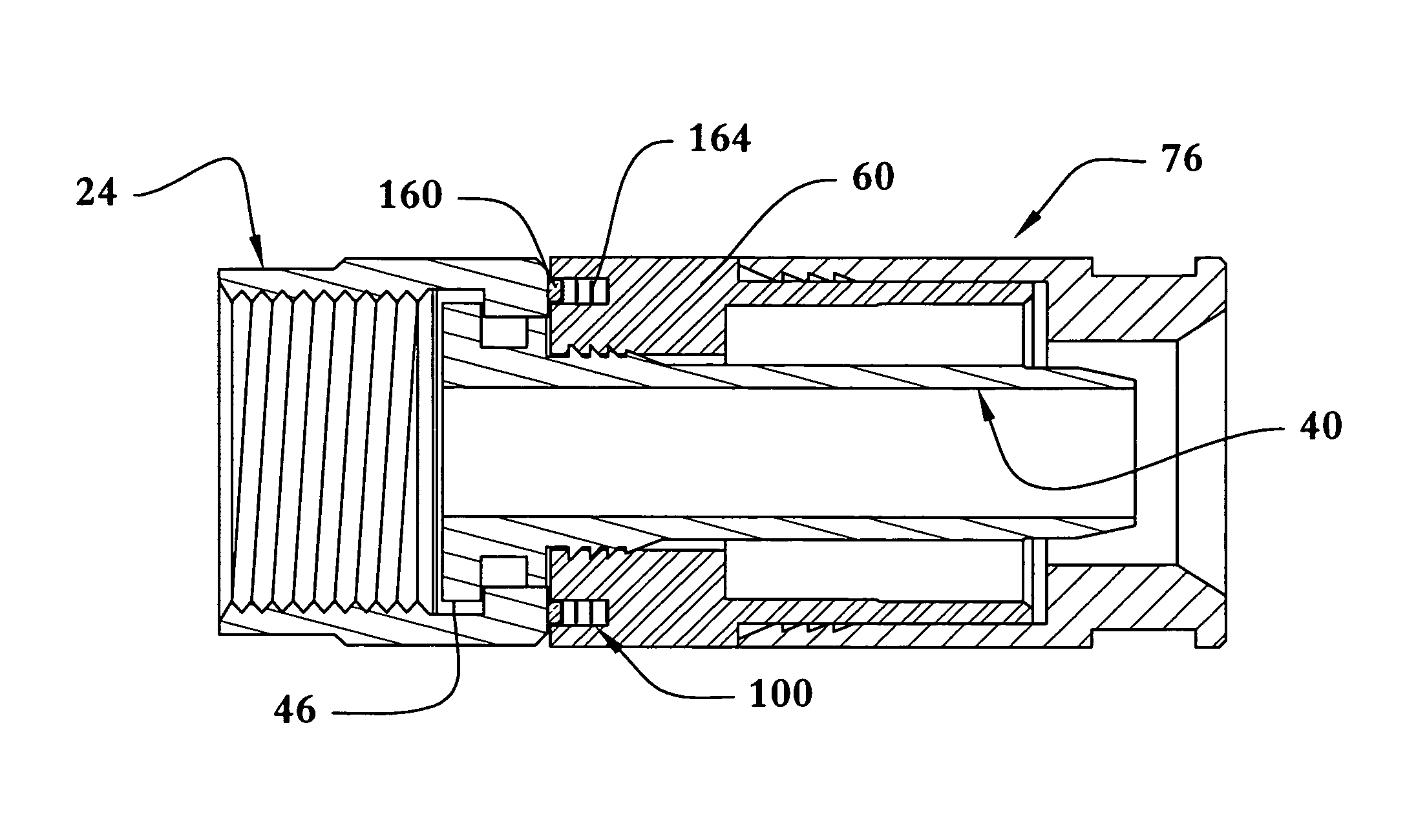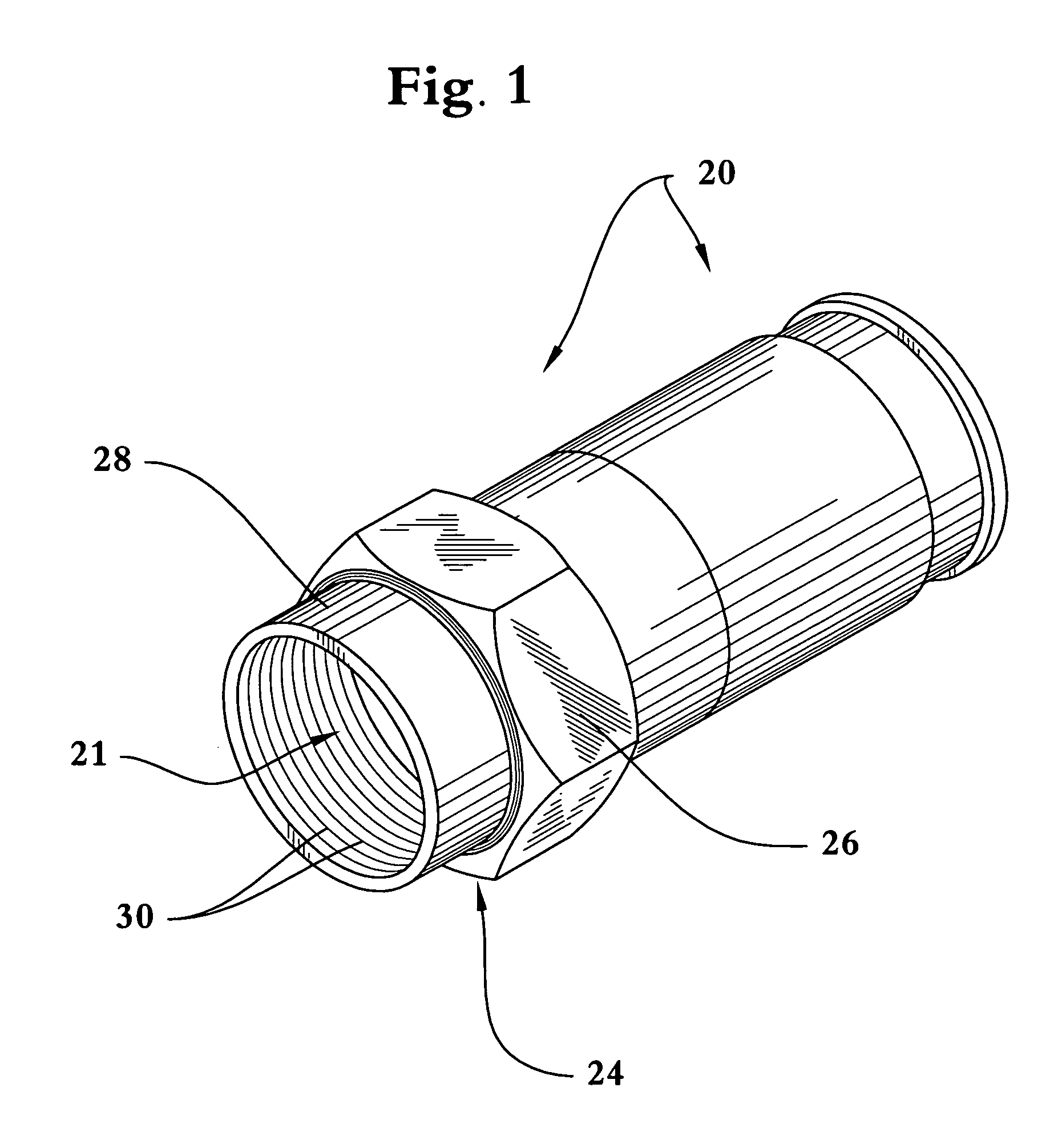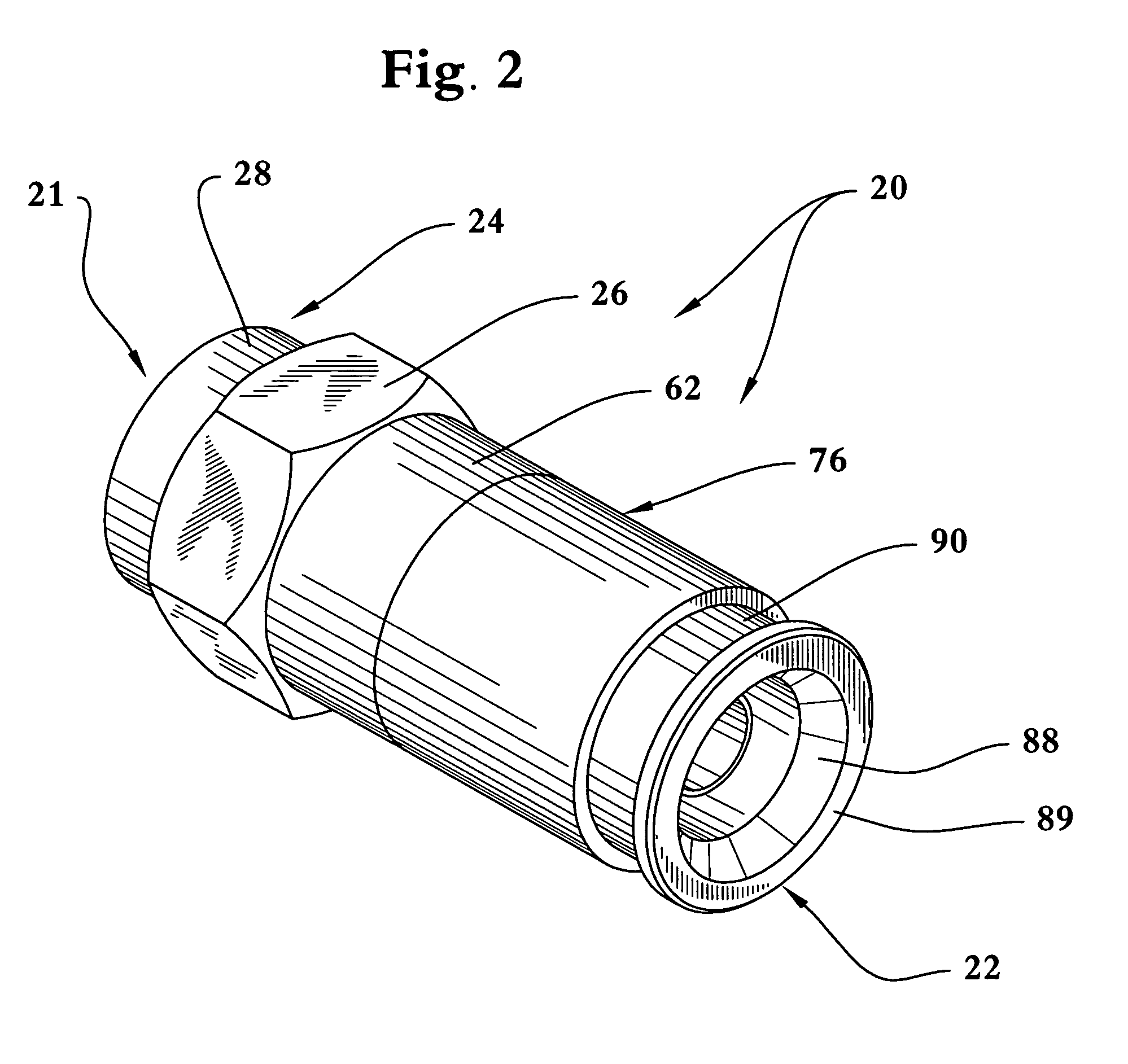Enhanced coaxial connector continuity
a coaxial connector and continuity technology, applied in the direction of coupling device connection, coupling protective earth/shielding arrangement, manufacturing tools, etc., to achieve the effect of reliable ground connection
- Summary
- Abstract
- Description
- Claims
- Application Information
AI Technical Summary
Benefits of technology
Problems solved by technology
Method used
Image
Examples
first embodiment
[0081]Therefore our electrical grounding adaptations have been proposed. The first embodiment of our adaptation includes a circumferential groove 100 defined in the body 60 illustrated in FIGS. 3 and 4. Groove 100 is coaxially defined in the outer face of stop ring 62 and, in assembly, faces the nut 24. An annular, generally circular D-ring 102 (i.e., resembling an O-ring) is pressed into groove 100, and, in assembly contacts the nut 24. The cross section of the O-ring reveals a generally band-like, tubular body 104 (FIG. 5) with a forward end 106 with a radiused profile, and a flat rear 105. Thus the preferred O-ring is in the form of a D-ring.
[0082]D-ring 102 presses forward on the F-connector nut 24 with resulting, positive pressure being maintained to tension the contact between post flange 46 and the inner nut shoulder 37 when the nut rotates around the connector during installation. This positive pressure maintains a constant continuity connection between the post and F nut. D...
second embodiment
[0083]A second or alternative embodiment is seen in FIGS. 7-10. Alternative F-connector 23, is externally substantially identical with connector 20, discussed above. However, connector 23 includes a continuity coil described hereinafter instead of O-ring 52. Like connector 20, the alternative connector 23 comprises a nut 24, a post 40, a body 60B, and an end cap 76, all of which are described above. Body 60B, however, lacks a groove 100.
[0084]As best viewed in FIGS. 9 and 10, the continuity coil 110 resembles an O-ring, such as O-ring 52 (FIG. 3) of the last described embodiment. The coil 110 is made of a looped, length of spring wire 114. The body has a circular cross section, indicated by the reference numeral 115 (FIG. 9). Coil 110 sits within post groove 50, and frictionally contacts the peripheral, surrounding wall of passageway 34 in the nut 24, that radially surrounds it. At the same time, post flange 46 contacts nut shoulder 37 (FIG. 8).
[0085]Preferably, continuity coil 110 ...
third embodiment
[0086]A third embodiment is seen in FIGS. 11-12. Alternative F-connector 23B, is externally substantially identical with connector 20, discussed above. However, connector 23B includes both a continuity coil 110 described above, and a D-ring 102. Like connector 20, the alternative connector 23B comprises a nut 24, a post 40, a body 60 and an end cap 76, all of which are described above.
[0087]D-ring 102 is nested within a groove 100 defined in the body 60 as described above. D-ring 102 functions upon assembly to tension the physical contact point between the post 40 and the nut 24. Meanwhile, continuity coil 110, seated within post groove 50 as before, contacts the periphery of nut passageway 34 and the surfaces bordering post groove 50 it establish electrical contact.
PUM
| Property | Measurement | Unit |
|---|---|---|
| compressible | aaaaa | aaaaa |
| tension | aaaaa | aaaaa |
| pressure | aaaaa | aaaaa |
Abstract
Description
Claims
Application Information
 Login to View More
Login to View More - R&D
- Intellectual Property
- Life Sciences
- Materials
- Tech Scout
- Unparalleled Data Quality
- Higher Quality Content
- 60% Fewer Hallucinations
Browse by: Latest US Patents, China's latest patents, Technical Efficacy Thesaurus, Application Domain, Technology Topic, Popular Technical Reports.
© 2025 PatSnap. All rights reserved.Legal|Privacy policy|Modern Slavery Act Transparency Statement|Sitemap|About US| Contact US: help@patsnap.com



